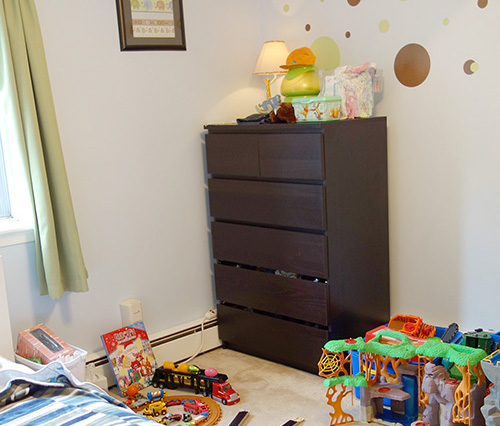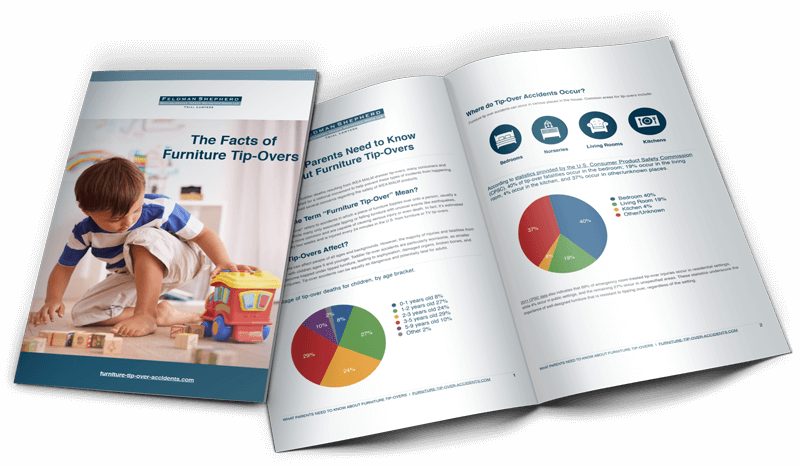Following the deaths of several toddlers across the U.S. due to IKEA MALM furniture tip-overs, attention is now being turned toward industry safety standards that apply to furniture with regards to tip-overs. Camden Ellis of Washington state and Curren Collas of Pennsylvania, both died in 2014 after being crushed beneath toppled IKEA MALM dressers. They were both only 2 years old.
In response to these incidents, parents and consumers are questioning current furniture safety standards, as well as IKEA’s lack of adherence to testing and safety procedures. These standards provide guidelines for testing procedures that manufacturers and designers can refer to when creating and developing their products in order to create safer furniture.
Consumers, product engineers, and safety specialists are pushing for new furniture standards to increase the safety and stability of furniture, which would help prevent serious injuries caused by tip-overs. It’s very important to get manufacturers to accept more stringent standards to assure that all dressers and other furniture sold in the U.S. meets minimum safety requirements.
What are the current safety standards with regards to furniture tip-over risks?
Current safety standards and testing procedure guidelines are issued by the American Society for Testing and Materials (ASTM) International, which is the global standards organization that creates voluntary technical standards for a broad range of products and services.
If you’re wondering exactly how furniture is tested for tip-over safety, and which manufacturers actually follow these recommendations, it’s important to get familiar with the guidelines.
With regards to furniture tip-overs, ASTM has published a “Standard Safety Specification for Clothing Storage Units”, which applies to dressers and chests taller than 30 inches. While the standards are voluntary, they require that:
- The empty dresser must remain stable when all of its drawers are open and all doors open to 90 degrees (it cannot tip over at this point)
- The dresser must remain stable when 50 pounds of weight are applied to the front edge of each individually-opened drawer, opened to the stop. If there is no drawer stop, the drawer must be opened to two-thirds of its operating length.
- Permanent warning labels regarding the tip-over risks must be attached in conspicuous locations that are visible when the product is in use.
The standards were developed using data provided by the Consumer Product Safety Commission (CPSC). Such data includes yearly statistics regarding furniture tip-over deaths and injuries. The CPSC staff concluded that a majority of tip-over accidents involved children age 5 and younger. The use of a 50 pound weight in the test procedure is intended to simulate the weight of a 5 year-old child who is in the 95th percentile of their weight for children of this age.
Is “Secure It” enough? IKEA MALM dressers do not meet safety standards
IKEA MALM dressers did not pass any of these standards, not even the basic stability requirement. For instance, in this video, you can see an IKEA MALM dresser tip over almost immediately when the drawers are opened. In another video where IKEA MALM dressers were independently tested, you can see the dresser tip over once 50 pound weights are added.
While the standards are voluntary, many furniture manufacturers routinely test their products to make sure they meet the ASTM standard. IKEA, however, does not design and build its dressers to comply with the standards. Rather than addressing the product’s design deficiencies, IKEA has initiated a “Secure-It” program, urging MALM owners to secure their dressers to the wall.
But safety professionals recognize that this type of response is inadequate, as many consumers cannot or will not affix their products to the wall for various reasons. Respected experts believe that this situation is unacceptable, and that IKEA should not be selling products that are dangerous by design to begin with. While not all tip-over incidents result in death, many other consumers are reporting injuries and near-misses due to MALM tip-overs.
Concerned citizens and lawmakers propose changes to furniture safety standards
The ASTM standards were introduced in 2000, and underwent revision in 2004, 2009, and 2014. In the wake of the IKEA tip-over tragedies, there are a number of proposed changes to make the furniture safety standards more stringent. Proposed changes to the standards have included:
- Increasing weight limit stability test from 50 to 60 pounds or heavier
- Conducting tests to simulate a dresser with a television placed on it
- Adopting a certification program for furniture that meets the stability standards
- Requiring third-party testing of furniture for stability
Recent discussions between federal safety regulators and engineers regarding the standards have led to at least one main general consensus: consumers would be able to spot safer products more easily if dresser warning labels were required to state clearly that the item of furniture meets furniture industry standards.
It is important to remember that ASTM standards are not only voluntary, but that they represent minimum standards. Manufacturers like IKEA should be encouraged to build dressers that exceed minimum standards so as to be safe as possible for their intended and foreseeable uses. But even minimum standards won’t help if manufacturers are willfully deciding to ignore them.
Others are recognizing that simply allowing the status quo to continue will mean more tragedy for more families. Senator Robert P. Casey of Pennsylvania has proposed legislation that would require furniture manufactures to ensure that their products are safer. He has also implored seven major retailers (Amazon, Best Buy, Walmart, Target, Costco, Lowe’s, and Home Depot) to provide customers with safer products and more information regarding furniture tip-over dangers. He believes that direct action by retailers may accomplish more for consumer safety in a shorter amount of time than government regulation or changes to the standards, which can take years to implement.
Who can contribute to increasing furniture safety?
The discussions surrounding furniture tip-over safety standards identify key actors who can contribute to increased safety. These include:
- Manufacturers: Creators and designers of furniture, such as IKEA, can contribute to better furniture safety by designing furniture that is more stable. Also, they should immediately accept current safety guidelines and ensure that their products conform with them.
- Retailers: Stores that carry furniture products can provide clearer warnings and better information to consumers regarding tip-over risks.
- Government: Government agencies such as the Consumer Product Safety Commission and federal and state legislators can press for stricter standards requiring safety to be built in, rather than added on.
In addition to seeking change through legislation and other means, victims of tip-over incidents are also filing lawsuits seeking damages to compensate them for their losses. Lawsuits can sometimes persuade manufacturers to change the way they conduct their operations. Furniture safety standards are important for the promotion of consumer safety and for preventing serious tip-over accidents.
If you or a loved one needs more information or legal guidance regarding an IKEA tip-over near-miss, injury, or wrongful death claim, please contact us today to share your experience. Our team of attorneys is dedicated to helping victims achieve legal recourse for their losses.
Parents of any child injured by a dresser that has overturned — whether IKEA or any other brand — are urged to contact Feldman Shepherd to share their story and discuss their legal options. The firm can be reached at (844) 480-0100 or by filling out the form below.


